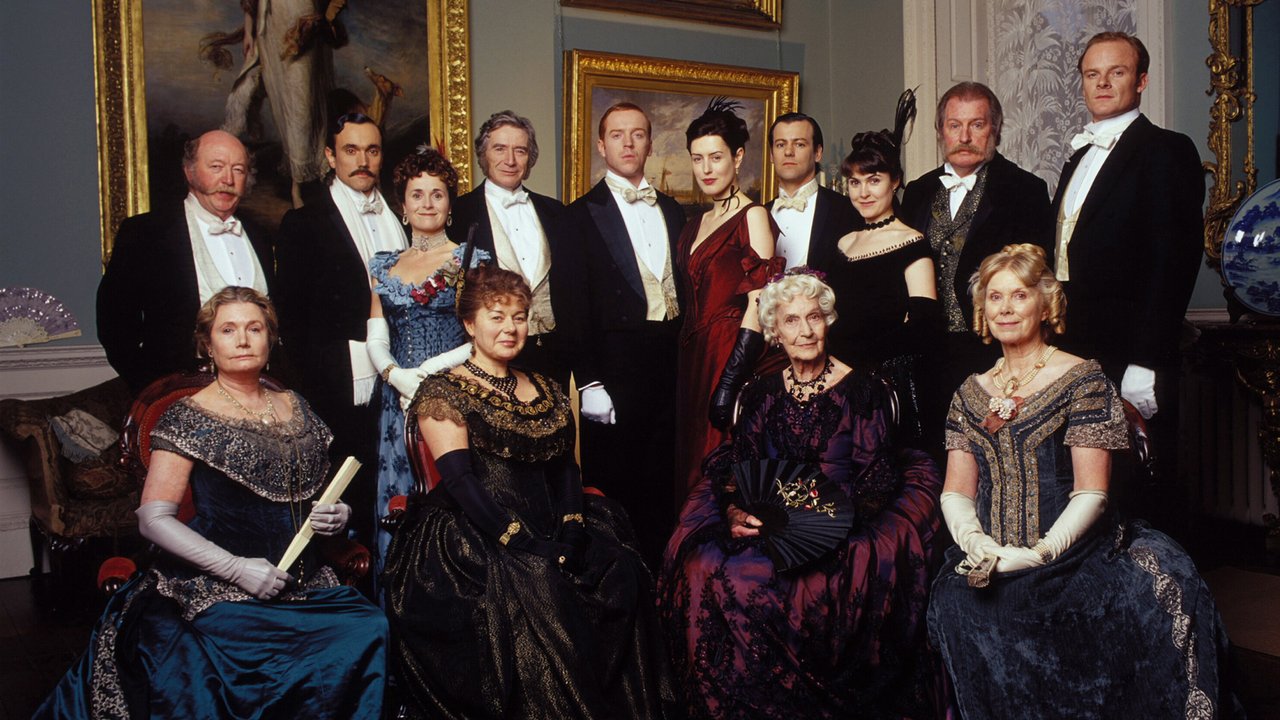After doing a back-to-back reading of Tolstoy,followed by a double dose of Dickens, my latest selection has been John Galsworthy's The Forsyte Saga. It's made up of three novels,plus a couple of interludes, that are usually published in one big book and has been adapted for radio,film and television for several decades.
The series earned Galsworthy a Nobel Prize for Literature in1932(the books were published between 1906 and 1921). The overall story is set in England during the end of the Victorian era and focuses on the upperclass Forsyte family, who view themselves as an institute of standards more than kinfolk.
At this point in their existence, the elder Forsytes such as Aunts Juley and Hester, disdainful cousins Swithin and Soames , not to mention Old Jolyon, the grand patriarch of the family, see themselves as followers of the tried and true way of British life while shaking their heads at the antics of the younger generation.
The newer Forsytes do have a spark of rebellion within them,for example there is June, raised by her grandfather Old Jolyon upon the death of her mother and determined to have her own way in things.
Her father, known as Young Jolyon, fell out of favor with the family after remarrying a governess and having two children by her(and yes, the boy from that relationship is also named Jolyon-that name is very popular with this bunch!). Jolyon the Younger also pursued his dreams of art with paintings that gave him a solid reputation yet not one that satisfied his relatives at all:
The center of conflict in all of these stories comes from Soames, who is obsessed with his wife Irene, who has no living family and was pretty much browbeaten into becoming his bride.
When Soames decides to build a house far out of London to keep Irene away from what he considers to be "undue influences" on her, the commission is given to Phillip Bonsinney, a promising young architect engaged to June,who happens to be good friends with Irene.
At first, this seems ideal but Bonsinney and Irene find themselves falling in love with each other, with one of them bound by the law as well as a promise of fidelity. This tension between them begins to rise to a noticeable level , straining June's relationship with both Irene and Bonsinney, not to mention turning up Soames' jealousy radar to a considerable extent:
Sadly, the bond between Irene and Bonsinney comes to a tragic end that resonates throughout the rest of the series. While Irene does manage to free herself from the possessive clutches of Soames, she still winds up being part of the Forsyte world in one way or another.
I took a look at the introduction written by the author for my edition of TFS this morning and noticed that there was mention of readers "pitying Soames" and I'm like, are you kidding me?!
While Galworthy's notion of pity for the character was that "he knows that he is unlovable" and that some of the readers of that time period would consider Soames a wronged husband, I suspect that many would be on Irene's side. For one, Soames is a dense ,self involved person who defines himself as a "man of property" and refers to Irene as one of his possessions, which even disgusts his cousin Young Jolyon(who later on, plays a larger role in this portion of the story).
He emotionally abuses Irene(and at one point, forces himself on her) who had, right from the start, told him that she didn't love him and asked Soames to agree to a divorce if their marriage didn't work out.
That promise is conveniently over looked by him until many years after they've separated and even when he does seek a divorce, it's only due to Soames wanting to remarry a younger woman in order to have a son. Even then, he still doesn't want to let Irene go, demanding that they try again! Fortunately, she receives some unintentional assistance from Jolyon the Younger in that regard.
Soames is the worst, in my opinion-the type of person who refuses to do the slightest bit of self examination and takes out his anger on those who don't give him exactly what he wants when he wants it. Irene, on the other hand, shows herself to be more than the beautiful enigma that most of the men here imagine her to be.
Her determination not to go back to Soames is admirable and by building a quiet yet productive life for herself that allows for a future chance at real love, she is a remarkable woman indeed. Maybe it's the modern day reader in me talking but Irene deserves to be seen as a heroine in her own right:
Of course, there are other story lines here, with one of Soames' sisters looking to divorce her cheating/gambling/skipping town husband, some of the younger generation signing up to fight the Boer war and new found romance among that set as well.
Galsworthy writes with a heartfelt elegance, not only about the inner lives of his characters but in describing the poetic moments of nature that many of the Forsytes experience and find true solace in as time goes on. Such richness of language is refreshing to behold, like having a renowned pianist perform live right in front of you. It's no wonder that he won the Nobel yet a shame that most readers haven't gotten to known him and his work.
If you're looking for a period drama to be immersed in during this remain at home time frame that we're all sharing now, The Forsyte Saga has much to offer there. I'm not sure what my next Morning Read will be after this(perhaps some Henry James or Georgette Heyer's An Infamous Army?) but one thing is certain-when it comes to the Forsyte family, keeping a steady poker face is necessary for social survival:






No comments:
Post a Comment